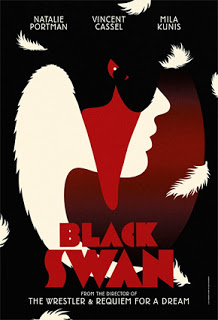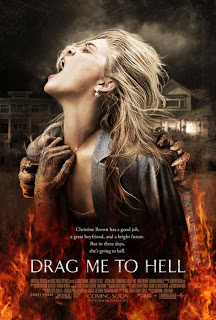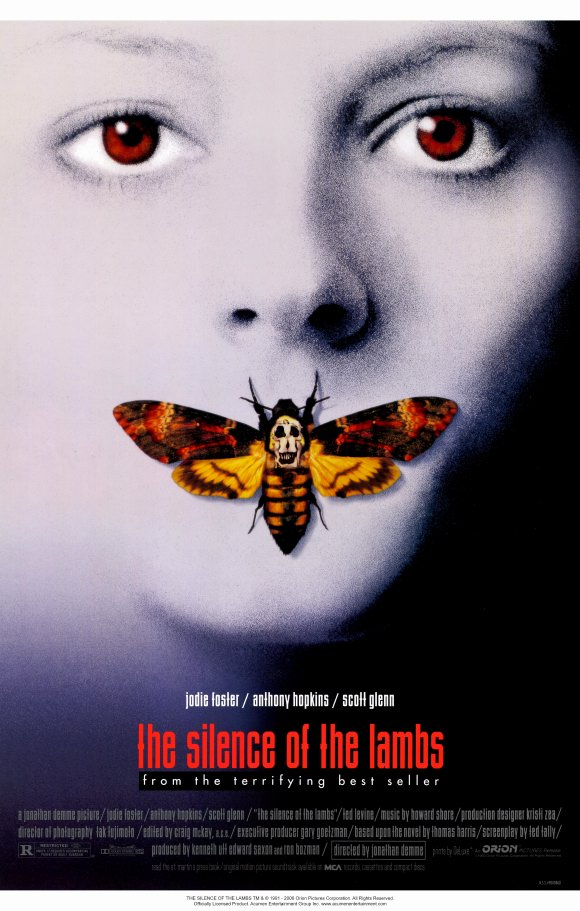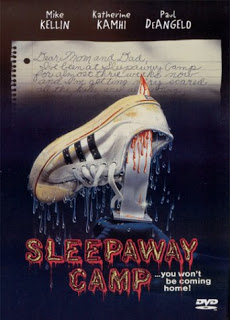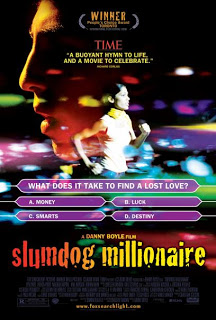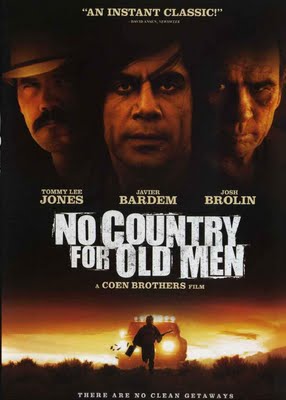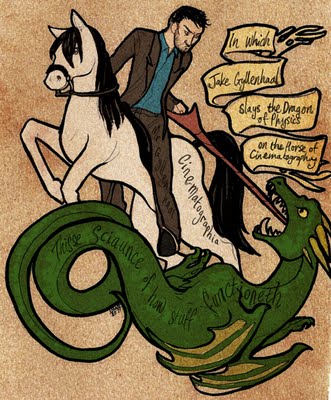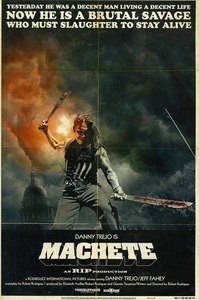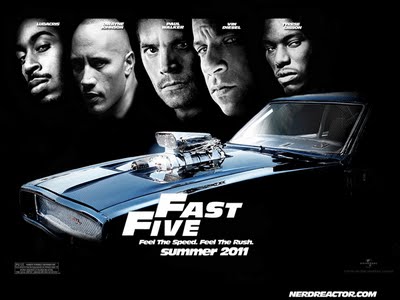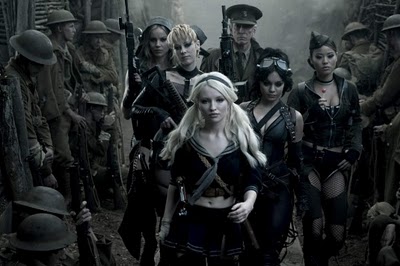 |
| Black Swan (2010) |
As Mila Kunis’s character descends upon Natalie Portman’s in the (dream) oral sex scene in Black Swan, a college-age young woman in the movie theater audibly whispers, “And this is why every guy in the theater is here.”
Darren Aronofsky’s 2010
Black Swan is a film about repression, perfection, and letting go.
It is a film about finding, torturing, losing, and gaining oneself through destruction, much like many postmodern films of the same genre (Fight Club, along with Aronofsky’s Requiem for a Dream and The Wrestler).
But to too many in that theater and in theaters across the country, it is a sexy, crazy, girl movie about ballet.
Even though most of the marketing of the film catered directly to the male gaze (focusing, of course, on that oral sex scene, which had nothing to do with sex in the context of the film), it is considered either a movie about a girl, or a movie for girls. Even in the sponsored post on Jezebel (which was heavily promoting the film through advertising), women were supposed to come see the film because of pretty ballet, and shocking scenes—psychological and sexual—all touted in a juvenile, sing-song manner: “Natalie violently masturbates face-down on a mattress under the gazes of two creepy stuffed bunnies. For real.” “Natalie makes out with Mila!” The advertisers seemed desperate to sell a different film to audiences. Females would surely flock to theaters to see ballet, so how could it be marketed toward men (and as seen here, women)? Frivolous lesbian sex. Because certainly men wouldn’t want to see a film about a ballerina (note that these marketing concerns certainly weren’t an issue for The Wrestler).
The IMDB page describes Black Swan as “A thriller that zeros in on the relationship between a veteran ballet dancer and a rival.”
But it’s not. Nina’s (Portman) rival, Lily (Kunis), has almost nothing to do with the central plot and theme of this film. However, the allure of feminine cattiness, jealousy, and competitiveness is much easier to digest than the idea that a film could focus on universal human conflicts with a female protagonist.
Aronofksy’s 2008 film The Wrestler is described on IMDB as follows: “A faded professional wrestler must retire, but finds his quest for a new life outside the ring a dispiriting struggle. “
Personal conflict, inner-struggle, the gender-neutral “quest.”
In an interview that touched upon gender issues in Black Swan, Aronofsky said, “… to me, if you paint a human character with real emotions and really empathize with them, it doesn’t matter if it’s a 50-something aging wrestler, or a 20-something ambitious dancer, they’re just people.” How unfortunate that we must hear that explanation from a director, instead of simply understanding it.
Lest the blame of this feminine vs. universal (masculine) protagonist issue be placed solely upon the marketing and audience, the feminist lens must also be properly focused. In Debra Cash’s “Swanday Bloody Swanday: Darren Aronofsky’s Sadistic, Misogynistic New Film,” she refers to the film as a “textbook demonstration of what academics refer to as the male gaze… Aronofsky’s fable portrays female powerlessness on every level—youth, friendship, collegiality, retirement, motherhood.” And that in itself is misogynistic? Should we not portray powerlessness because we want to be powerful? Had Aronofsky been celebrating powerlessness, maybe that argument would hold true, but he certainly was not. Showing how destructive powerlessness is should be viewed as a feminist action.
Many feminist film reviewers also lambasted the misogyny of the ballet’s artistic director, Thomas (played by Vincent Cassel), even though his character’s inherent sexism (referring to his principle dancer as his “Little Princess,” for example) is essential to the themes of repression and being able to break free from said repression. Jill Dolan, at The Feminist Spectator, says that “As her [Nina’s] relationship with Thomas gets more and more entwined, she begins to suffer from a kind of Stockholm Syndrome, idealizing and even identifying with Thomas and his mercurial cruelty.” This is begging the question that Nina is the victim–would we ever assume a grown man in a similar role was the victim? Perhaps we’d glance at the notion, but never give him the simple, passive role of “victim.” Relegating Nina to the role of the victim belittles and negates the larger focus of the film.
While Thomas’s advice to Nina to touch herself is uncomfortable, it is effective, not purely sexist, in trying to force her to find her Black Swan. What better way to discuss this clearly feminist idea—the female orgasm and the difficulty to attain it due to outside and inside pressures—than in the context of the dichotomy of the White and Black Swans? When she finally does achieve orgasm during the aforementioned dream sequence, it’s clear she can do so only when she has lost herself enough, and lost herself to a point where she can blame someone else for her destruction, that she can let herself (and her Black Swan) free.
While this literal and figurative climax also serves as the beginning of her perfection and destruction, we can see that the destructive nature of this epiphany relies on the fact that she has not achieved freedom by herself. Dolan presents this scene as if it is a lesbian sex scene, as does Cash. In doing so, these feminist commentators take away the importance of the scene by assuming it’s simply for the male gaze, when in fact it is all about Nina overcoming, or attempting to overcome, the passive social and sexual world that she inhabits, while still striving for perfection.
This leaves the feminist viewer to wonder what makes a film feminist? Must sexism lose and the oppressed woman break free and live happily ever after? Instead, perhaps the truly feminist film is one that makes the female protagonist represent humanity, not just womanhood. Dolan ends her article with the line: “That’s a message that’s not good for the girls.” This further proves the idea that the message of success through self-destruction cannot be gender-neutral with a female protagonist.
Aviva Dove-Viebahn, in her Ms. Magazine Blog review “Sex, Lies and Ballet,” acknowledges Aronofsky’s “fascination with the intense humanity and obsessive desires of his characters” in a refreshingly comprehensive review. Dove-Viebahn clearly sees what the others miss—that we as viewers are supposed to be questioning and compelled by Aronofksy’s narrative.
In the Variety article “Stalking the perfect ending,” Mark Heyman (one of the writers of the film, along with John McLaughlin and Andres Heinz) said about the film’s end: “We wanted it to have some kind of emotional weight and significance and somehow be satisfying, even though it’s tragic… so that it felt like she had achieved something even as she had destroyed herself.” It seems that the writers and the director have a clear understanding of the purpose of the film, and the complicated, yet simple, themes. Why did so many audiences and critics miss the point?
In Nassim Nicholas Taleb’s The Black Swan: The Impact of the Highly Improbable, he explores probability and the human urge to predict in his Black Swan Theory (typically used to explain world and financial events). He derives the title of the book and theory with the story of the white swan in the “old world”—people had only ever seen white swans, so they assumed all swans were white. The sighting of a black swan was a complete surprise. He says, “It illustrates a severe limitation in our learning from observations or experiences and the fragility of our knowledge. One single observation can invalidate a general statement derived from millennia of confirmatory sightings of millions of white swans.” The male protagonist is the white swan—the millions of white swans. Aronofsky’s Black Swan—the female protagonist—has shocked the people in our “old” world. We don’t know what to do with it exactly, and are unclear of its purpose.
Taleb goes on to describe the three attributes of the Black Swan: “it is an outlier, as it lies outside the realm of regular expectations,” “it carries an extreme impact,” and “in spite of its outlier status, human nature makes us concoct explanations for its occurrence after the fact, making it explainable and predictable.” The audiences who quickly categorize Black Swan as a movie for/about women, or the critics who lambast its misogyny, are unable to otherwise grapple with the outlier of a female protagonist who can show us ourselves—male and female.
Unfortunately, we are still entrenched in a culture where men’s stories are universal stories of humanity, and women’s stories are women’s stories. Until we move past that, and realize that just as we don’t have to be aging professional wrestlers to understand the humanity and struggle of
The Wrestler’s protagonist, nor do we have to be young female ballerinas to see Nina as a character that speaks to us in
Black Swan, we will continue to be in gendered places in the movie theater, where male protagonists are the norm, and female protagonists are only noteworthy if they are being gone down on.
Leigh Kolb is an English and journalism instructor at a community college in rural Missouri, and has an MFA in creative nonfiction writing. She lives on a small farm with her husband, dogs, chickens, and garden, and makes a terrible dinner party guest because all she wants to talk about is feminism and reproductive rights.

